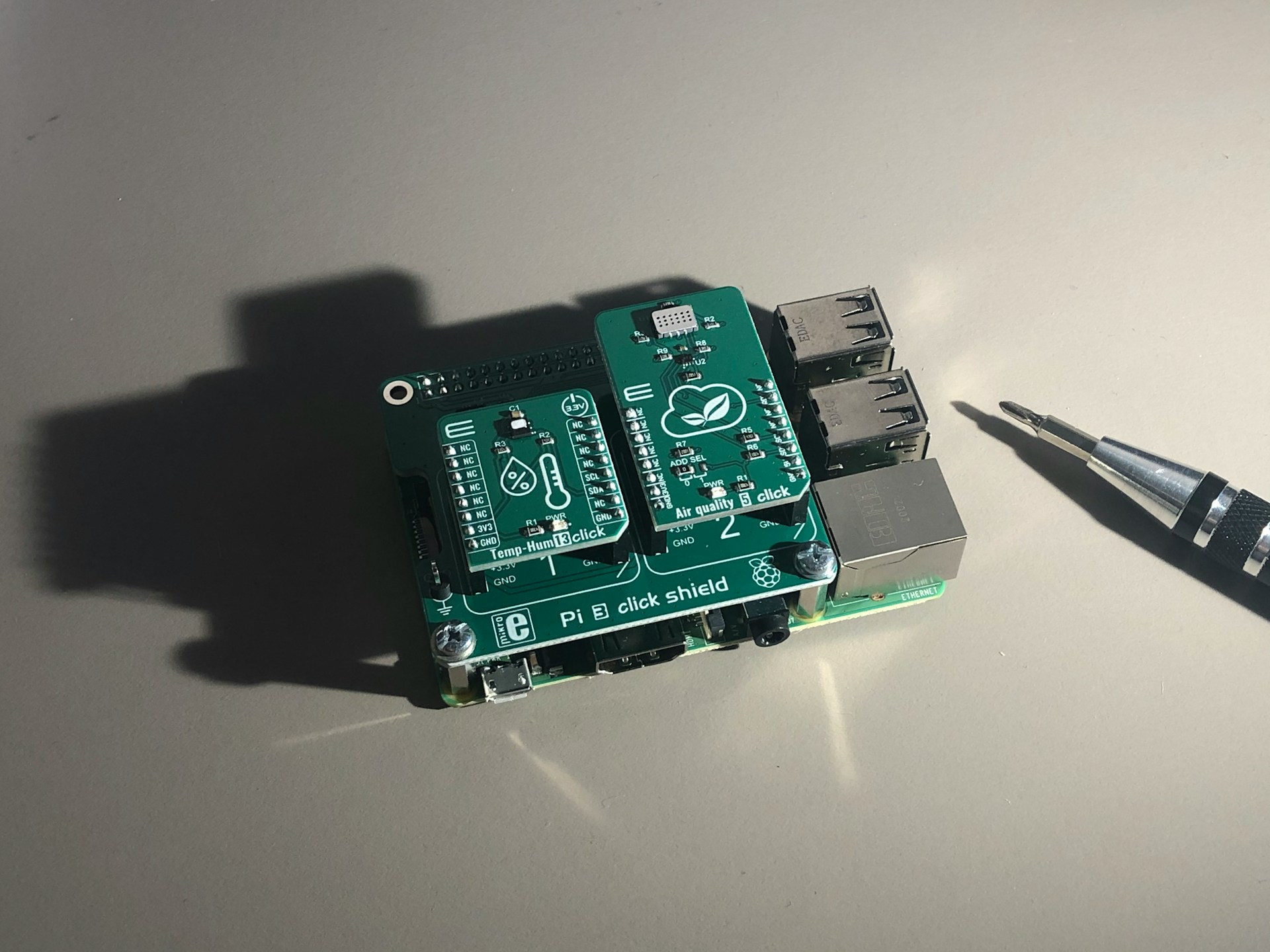There is no doubt that we live in a world where technology is rapidly advancing. In embedded systems development, having skilled workers is crucial for staying ahead in such a competitive market. But, finding and keeping top talent can be tough with changing industry needs. That's why many companies are trying out a talent pipeline strategy, like teaming up with educational institutions, building a collaborative workplace culture, and investing in training to upskill junior teams and bridge talent gaps.
This blog explores the importance of a strong talent pipeline strategy, focusing on how working with junior teams can be a game-changer for businesses in the embedded systems scene. Let's explore practical tips and tricks for growing talent and how you can build long-term future leaders within your business.
What are the Benefits of Building Talent Pipelines?
So, why should you consider building a strong talent pipeline strategy? There are endless benefits of leveraging junior team members to build a talent pipeline for embedded systems jobs, including:
Reduced time to hire
In a competitive market where talent and specialised expertise are available, businesses must hire quickly. Candidates within talent pipelines have already been identified and engaged with, ensuring workflow and projects stay on track.
Cost-effective
Since a strong talent pipeline strategy means the time to hire is significantly reduced, businesses can save on additional costs associated with advertising job postings or using extensive resources to source and attract candidates.
Improved quality of hires
By building connections with potential candidates, employers open doors to a wider pool of talented individuals, allowing businesses to be more selective in hiring, increasing the chances of bringing in top performers who fit well with company culture.
Higher retention rates
By investing time into a strong talent pipeline strategy, employers can demonstrate a commitment to long-term growth and career development, creating a sense of loyalty and reducing employee turnover.
Now that we have uncovered the key benefits of building talent pipelines let’s dive into how collaboration with educational institutions, such as universities, is the first step to building an effective talent pipeline strategy:
Collaborate with Educational Institutions
Collaborating with educational institutions is an essential talent pipeline strategy when attracting top junior talent to embedded systems jobs. By building relationships with educational institutions, businesses can establish pipelines for identifying promising candidates.
According to research by Ginux, companies prioritising building a solid talent pipeline tend to achieve higher levels of success. The study shows that organisations with strong talent management capabilities are 2.3 times more likely to be high-performing, highlighting the importance of a strong talent acquisition strategy.
So, how does collaborating with educational institutions broaden embedded systems talent pools?
- Early access to potential talent - By collaborating with universities, employers gain access to early talent and have the opportunity to connect with passionate students early in their careers. By offering internship programs to potential junior candidates, employers can provide hands-on experience and mentorship, allowing hiring managers to identify and nurture promising talent and potentially influence their career paths towards your organisation.
- Building relationships - Employers can build connections with professors, researchers, and career advisors at universities, expanding talent pools and enhancing connections with educational institutions, paving the way for future collaborations or targeted recruitment efforts. Employers also have the opportunity to mentor students and participate in academic events, where students can create a positive association with embedded systems businesses, potentially attracting upcoming talent.
- Internship programs - Collaborations with educational institutions can also lead to internship programs. By offering students hands-on experience in dealing with real-world embedded systems projects, employers gain access to their skills first-hand and have the opportunity to identify and build on potential talent before students graduate.
Build a Strong Employer Brand
According to an analysis from TalentLyft, 72% of recruiting leaders agree that employer branding directly impacts talent attraction and retention. This figure highlights the importance of building a strong employer branding strategy to attract junior talent and build effective talent pipelines within the embedded systems industry.
Here are the key ways in which embedded systems businesses can develop a stand-out employer branding strategy to attract junior talent:
- Highlight projects and impact - Displaying successful embedded systems projects on various social media platforms attracts potential employees who are interested in working in the sector. By highlighting your projects' real-world impact, employers can attract junior candidates looking for purpose-driven careers.
- Employee testimonials - By posting employee success stories on various online platforms, employers can gain insight into junior team members who have grown and thrived within the organisation. Focusing on employee testimonials showcases a commitment to employee development and satisfaction, which attracts potential candidates.
- Stay active on social media - A consistent social media presence is essential for a strong employer branding strategy. By featuring all aspects of your company, ranging from workplace culture, project updates, or valuable industry insights, employers can broaden their reach and connect with potential junior talent to fill essential embedded systems jobs.
What are the key benefits of building a compelling employer branding strategy?
- Creating a compelling employer brand distinguishes your organisation, highlighting its distinct culture, values, and employee experiences.
- Establishing a distinctive brand identity enhances your organisation's attractiveness to vast junior talent.
- Exceptional brand identities enhance candidate experiences, contributing to overall satisfaction and engagement.
- Superior branding draws in suitable candidates, reducing traditional recruitment expenses linked to advertising.
- A reliable stream of qualified professionals maintains consistent productivity levels.
Invest in Training and Upskilling
To implement a strong talent pipeline strategy for embedded systems jobs, employers must be open to implementing training and upskilling programs for their junior teams. Not only does training bridge skill gaps, but upskilling allows employees to thrive, increasing performance and satisfaction.
Here are the key reasons why investing in training and upskilling forms strong talent pipelines for embedded systems:
- Bridging skill gaps - Junior team members typically enter the workforce with solid theoretical knowledge of embedded systems. Yet, they may lack practical experience and industry-specific skills. Investing in training bridges these gaps, preparing your junior team to handle real-world projects. Embedded systems continuously evolve with emerging technologies. Training enables junior team members to stay abreast of these changes, ensuring they remain valuable contributors to your organisation.
- Professional development - Investing in training and professional development demonstrates a commitment to valuing the career growth of your junior team. Providing your team with diverse skills in embedded systems development enables them to excel in their role, forming a culture of innovation and collaboration.
- Reduced turnover - When junior team members feel valued and see opportunities for growth, they are more inclined to remain with your organisation. Training programs not only address skill gaps but also promote motivation and confidence within the team, which increases the retention of skilled individuals, particularly in the specialised field of embedded systems development.

Offer Incentives and Career Growth Opportunities
Maintaining a strong talent pipeline is widely recognised as a top strategy in the recruitment sector. Approximately 70% of recruiters emphasise the importance of a solid talent pipeline strategy for enhancing brand reputation, building candidate connections, and enhancing client responsiveness.
- Competitive advantage - It is no secret that the embedded systems market is highly competitive. By offering employee incentives and demonstrating a clear path for career progression, your business attracts ambitious junior professionals who aspire to progress. Talent acquisition and retention are increased, and employers can ensure their organisation stands out from the competition.
- Engagement - Employers can ensure junior teams are engaged and productive by investing in a strong talent pipeline strategy early on and offering valuable incentives. When employees see a future within your organisation, they are empowered to offer new innovative ideas and remain at your company long-term.
- Motivation - Providing incentives such as competitive salaries, pension and healthcare schemes, and a clear path for career growth motivates junior teams to excel. When employees feel valued, motivated, and supported in their careers, team productivity increases, and employee turnover is reduced, meaning your business can secure long-term junior talent pipelines for embedded systems development.
For more information on the key skills employers should look for when hiring new candidates for embedded systems jobs, discover our insightful guide - Top Embedded Systems Programming Skills Employers Should Look For.
Final Thoughts on Building Embedded Systems Talent Pipelines
In today's highly competitive embedded systems market, leveraging junior team members to build talent pipelines offers significant advantages. Collaborating with educational institutions allows companies to access early talent pools, establish connections with students, and offer internship programs. Building a winning employer brand through social media presence, project showcases, and employee testimonials is vital for attracting and retaining talent. A compelling employer brand distinguishes the company, making it more attractive to potential candidates.
Investing in training and upskilling is crucial for bridging skill gaps among junior team members. Training programs not only prepare them for real-world projects but also keep them updated on emerging technologies. This investment in professional development enhances employee satisfaction, reduces turnover, and ultimately boosts overall performance, ensuring the company remains competitive in the dynamic embedded systems industry.
Offering incentives and career growth opportunities motivates junior team members to excel and contribute their best efforts. Competitive salaries, performance-based rewards, and clear career progression paths create a positive work environment where innovation thrives. By nurturing and supporting their junior talent, companies can build valuable talent pipelines that drive success and sustain the company's growth in the long run.
Need Help Building Your Embedded Systems Talent Pipeline?
Our expert recruitment consultants are dedicated to linking valuable expertise with global embedded systems organisations. With our unmatched resources and extensive networks, we tap into rich talent pools to source the professionals required to drive innovation within embedded systems development.
Contact us today to discover how we can assist you in building secure talent pipelines within embedded systems.






